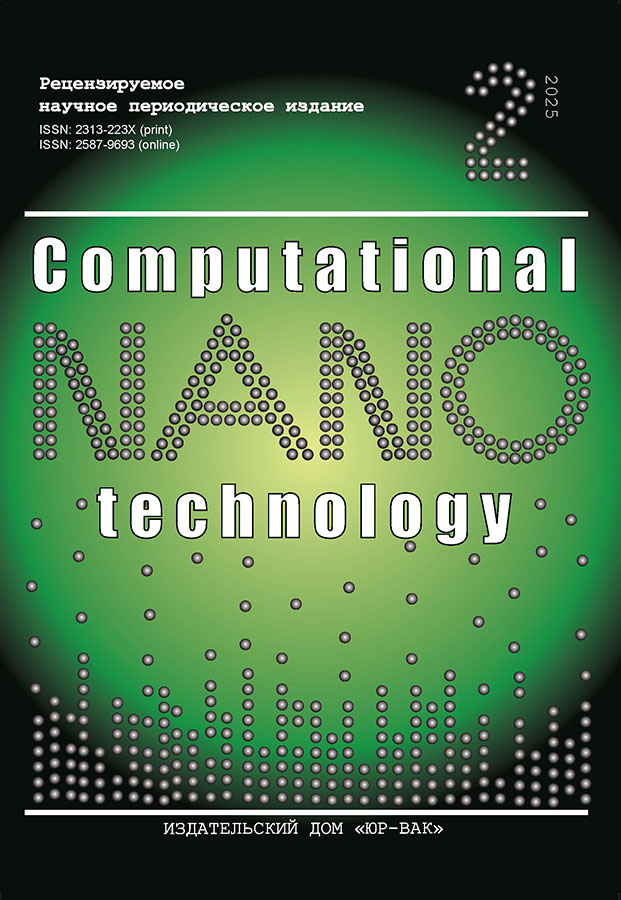Determination of optimal parameters for efficient terminal operation by means of a simulation model in the AnyLogic environment
- Authors: Shevchenko A.M.1, Dyda A.A.1
-
Affiliations:
- Admiral G.I. Nevelsky Maritime State University
- Issue: Vol 12, No 2 (2025)
- Pages: 98-108
- Section: Computer modeling and design automation systems
- URL: https://journals.eco-vector.com/2313-223X/article/view/689239
- DOI: https://doi.org/10.33693/2313-223X-2025-12-2-98-108
- EDN: https://elibrary.ru/QQASSH
- ID: 689239
Cite item
Abstract
This article presents a study on determining the optimal parameters of terminal operation based on simulation modeling in the AnyLogic environment. The urgency of the work is due to the need to improve the efficiency of terminals in conditions of increasing intensity of cargo flows and limited resources. The purpose of the study is to analyze the simulation model of the terminal, which makes it possible to identify the optimal values of key parameters. To ensure a comprehensive assessment of the prospects for the development of the port infrastructure, various scenarios for the operation of the terminal have been developed. Each of the scenarios will be analyzed twice, with varying SPM performance, which will allow us to assess the impact of this parameter on the overall efficiency of the terminal. The article presents the results of computational experiments aimed at determining the influence of various parameters on the key performance indicators of the terminal. The results obtained can be used in the design of new terminals and the modernization of existing ones.
Keywords
Full Text
About the authors
Anastasia M. Shevchenko
Admiral G.I. Nevelsky Maritime State University
Author for correspondence.
Email: anastasiya2100@bk.ru
SPIN-code: 6698-2474
postgraduate student
Russian Federation, VladivostokAlexander A. Dyda
Admiral G.I. Nevelsky Maritime State University
Email: adyda@mail.ru
SPIN-code: 1187-5058
Dr. Sci. (Eng.); Professor, Department of Automatic and Information Systems (AIS), Faculty of Electronics and Information Technologies
Russian Federation, VladivostokReferences
- Akopov A.S. Simulation modeling. Textbook and workshop for academic bachelor's degree. Lyubertsy: Yurait, 2016. 389 p.
- Bocharov E.P., Aleksentseva O.N. Simulation of economic process. Textbook. Saratov: Saratov Socio-Economic Institute (branch) of the Plekhanov Russian University of Economics, 2014. 160 p.
- Bulygina O.V., Yemelyanov A.A., Yemelyanova N.Z. Simulation modeling in economics and management. Textbook. Moscow: Infra-M, 2017. 447 p.
- Vyunenko L.F., Mikhailov M.V., Pervozvanskaya T.N. Simulation modeling. Textbook and workshop for academic undergraduate studies. Lyubertsy: Yurait, 2016. 283 p.
- Devyatkov V.V., Polovnikov V.A., Devyatkov V.V. Simulation modeling. Textbook. Moscow: COURSE; Infra-M, 2013. 368 p.
- Karpov Yu. Simulation modeling of systems. Introduction to modeling with AnyLogic. St. Petersburg: BHV, 2009. 400 c.
- Kobelev N.B., Devyatkov V.V., Polovnikov V.A. Simulation modeling. Textbook. Moscow: Infra-M, 2016. 448 p.
- Korablev Yu.A. Simulation modeling (for bachelors). Moscow: KnoRus, 2018. 59 p.
- Lychkina N.N. Simulation modeling of economic processes. Textbook. Moscow: Infra-M, 2012. 254 p.
- Muravyov D.S. The use of simulation modeling to assess the processing capacity of seaports and substantiate the need for the construction of a “dry” port. Modern Problems of the Russian Transport Complex. 2013. No. 4. Pp. 66–72. (In Rus.)
- Prokofieva T.A. Logistic infrastructure of international transport corridors: A cluster approach to management. The World of Transport. 2015. Vol. 9. No. 1. Pp. 50–57. (In Rus.)
- Rybin P.K., Yershikov N.V., Komovkina N.S., Putilina D.V. Analysis of the structure of train and wagon flows arriving at the Russian ports of the Gulf of Finland. Proceedings of Petersburg Transport University. 2018. No. 3. Pp. 478–486. (In Rus.)
Supplementary files


























